The Nuclear Thermal Rocket That Could Get Us to Mars in Just 45 Days
The path to higher thrust propulsion starts here.

- NASA has hired Lockheed Martin to design, build, and test a nuclear-powered rocket for space travel.
- The technology could speed up a manned trip to Mars from the current seven-month minimum to as few as 45 days.
- A nuclear fission reactor would power the rocket’s engine for nuclear propulsion.
NASA and the U.S. Department of Defense’s Defense Advanced Research Projects Agency (DARPA) contracted Lockheed Martin to design, build, and test nuclear thermal rocket technology for a shorter, faster trip to the Red Planet. The rocket is also expected to operate with twice the efficiency as conventional chemical rockets, which combine fuel and an oxidizer for combustion power.
“Working with DARPA and companies across the commercial space industry will enable us to accelerate the technology development we need to send humans to Mars,” Pam Melroy, NASA deputy administrator, says in a statement . “This demonstration will be a crucial step in meeting our Moon-to-Mars objectives for crew transportation into deep space.”
Lockheed Martin will lead spacecraft design, integration, and testing of the roughly $500 million project, and BWX Technologies will design and build the nuclear fission reactor to power the engine.
Tabitha Dodson, DARPA program manager for the project, says in a statement that the DRACO project (Demonstration Rocket for Agile Cislunar Operations) “aims to give the nation leap-ahead propulsion capability.”
A nuclear thermal rocket could achieve high thrust—much like chemical propulsion—but is up to three times more efficient. This means that instead of the seven month-minimum it now takes to get to Mars , a nuclear-powered trip would only take 45 days . And going to Mars in 45 days isn’t the only benefit, as NASA is also looking for an efficient Earth-to-Moon connection.
“In order for our country, for our species, to further explore space, we need changes in more efficient propulsion,” Kirk Shireman, Lockheed Martin’s vice president for lunar exploration campaign, said in a press conference, according to the Washington Post . “Higher thrust propulsion is really, really important. And I think we’re on the cusp of that here.”
The United States started down the nuclear rocket path in the 1950s, but the idea was scraped during a 1970s budget cut. The DRACO program aims to build on that early research, but with a new fuel option for fewer logistical hurdles. Using a high-assay, low-enriched uranium fuel, the fission -based reactor can split apart atoms, heat up liquid hydrogen, and shoot that high-temperature gas through an engine nozzle for the needed thrust.
The greater efficiency from a nuclear thermal rocket not only slashes transit time, but also reduces astronaut risks and cuts down on payload needs for both supplies and systems.
One challenge yet to be overcome, according to Live Science , is the need to heat the hydrogen to 4,400°F while also storing it a minus-420°F. “This is just as much a demonstration of on-orbit storage of cryogenic liquid hydrogen as it is a demo of the nuclear thermal rocket,” Dodson says.
In the hoped-for 2027 test launch, the engine’s fission reactor will stay turned off—for obvious safety reasons—until the rocket reaches its designated orbit. The U.S. Space Force will provide a launch vehicle to take the test vessel into space.
The initial DRACO test plans to send the craft at least 435 miles and no more than 1,240 miles into space. It has no planned maneuvers, and will instead allow the vehicle’s reactor to use the new fuel and collect data along the way. With a planned two months of liquid hydrogen stored on the craft, crews may also test, according to Space News , the possibility of an in-space refueling.
“We’re going to put this together,” Shireman told reporters, according to Live Science , “we’re going to fly this demonstration, gather a bunch of great data and really, we believe, usher in a new age for the United States [and] humankind, to support our space exploration mission.”
Tim Newcomb is a journalist based in the Pacific Northwest. He covers stadiums, sneakers, gear, infrastructure, and more for a variety of publications, including Popular Mechanics. His favorite interviews have included sit-downs with Roger Federer in Switzerland, Kobe Bryant in Los Angeles, and Tinker Hatfield in Portland.


.css-cuqpxl:before{padding-right:0.3125rem;content:'//';display:inline;} Moon and Mars .css-xtujxj:before{padding-left:0.3125rem;content:'//';display:inline;}
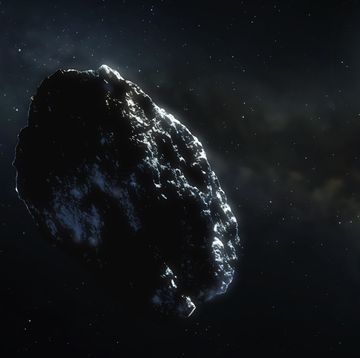
How to View the Solar Eclipse

How a Lunar Supercollider Could Upend Physics

The Moon Is Going Nuclear

Private Company to Mine Helium-3 from the Moon

3 Moons Emerged From Around Neptune and Uranus

4 People Are Spending a Year In a Martian World.

America Has Planted Its Feet on the Moon Once More

The Strange Origin of the Hollow Moon Conspiracy

The Moon Is Shrinking Where We're Trying to Land
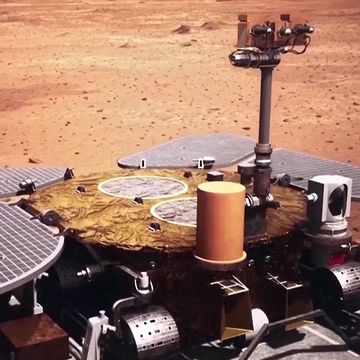
Rover Reveals Bizarre Shapes on Martian Surface

Ingenuity Has Made Its Final Flight on Mars.
NASA to test nuclear rocket engine that could take humans to Mars in 45 days
This is the first time a nuclear powered engine has been tested in fifty years

NASA has revealed plans to create a nuclear-powered rocket that could send astronauts to Mars in just 45 days.
The agency, which has partnered with the Pentagon’s Defense Advanced Research Projects Agency (DARPA) to design the rocket, announced on Tuesday (Jan. 24) that it could build a working nuclear thermal rocket engine as soon as 2027.
NASA’s current rocket systems (including the Space Launch System which last year sent the Artemis 1 rocket on a historic round-trip to the moon) are based on the century-old, traditional method of chemical propulsion — in which an oxidizer (which gives the reaction more oxygen to combust with) is mixed with flammable rocket fuel to create a flaming jet of thrust. The proposed nuclear system, on the other hand, will harness the chain reaction from tearing apart atoms to power a nuclear fission reactor that would be “three or more times more efficient” and could reduce Mars flight times to a fraction of the current seven months, according to the agency.
Related: To the moon! NASA launches Artemis 1, the most powerful rocket ever built
"DARPA and NASA have a long history of fruitful collaboration in advancing technologies for our respective goals, from the Saturn V rocket that took humans to the Moon for the first time to robotic servicing and refueling of satellites," Stefanie Tompkins , the director of DARPA, said in a statement . "The space domain is critical to modern commerce, scientific discovery, and national security. The ability to accomplish leap-ahead advances in space technology… will be essential for more efficiently and quickly transporting material to the moon and, eventually, people to Mars."
— 5 strange, cool things we've recently learned about the moon
— Beautiful 'Earthset' photo taken during Artemis mission a nod to Apollo 'Earthrise' image
— NASA's new moon rocket spotted from space rolling to the launch pad (photos)
NASA began its research into nuclear thermal engines in 1959, eventually leading to the design and construction of the Nuclear Engine for Rocket Vehicle Application (NERVA), a solid-core nuclear reactor that was successfully tested on Earth. Plans to fire the engine in space, however, were mothballed following the 1973 end of the Apollo Era and a sharp reduction of the program's funding.
Nuclear engines can fire more efficiently than their chemical counterparts, and for extended periods of time — propelling rockets faster and further. They are split into two types: Nuclear Electric Propulsion (NEP) reactors, which work by generating electricity that strips electrons from noble gases such as xenon and krypton before blasting them out of the spacecraft’s thruster as an ion beam; and Nuclear Thermal Propulsion (NTP) reactors, which is the type being investigated by NASA, uses the fission reaction to heat a gas (typically hydrogen or ammonia) so that it expands through a nozzle to provide thrust.
Sign up for the Live Science daily newsletter now
Get the world’s most fascinating discoveries delivered straight to your inbox.
The Artemis 1 flight was the first of three missions testing the hardware, software and ground systems intended to one day establish a base on the moon and transport the first humans to Mars . This first test flight will be followed by Artemis 2 and Artemis 3 in 2024 and 2025/2026, respectively. Artemis 2 will make the same journey as Artemis 1 but with a four-person human crew, and Artemis 3 will send the first woman and the first person of color to land on the moon's surface, at the lunar south pole.
"It's historic because we are now going back into space, into deep space, with a new generation." NASA Administrator Bill Nelson said following Artemis 1’s launch. "One that marks new technology, a whole new breed of astronauts, and a vision of the future. This is the program of going back to the moon to learn, to live, to invent, to create in order to explore beyond."

Ben Turner is a U.K. based staff writer at Live Science. He covers physics and astronomy, among other topics like tech and climate change. He graduated from University College London with a degree in particle physics before training as a journalist. When he's not writing, Ben enjoys reading literature, playing the guitar and embarrassing himself with chess.
Dying SpaceX rocket tears blood-red 'hole' in the sky over Texas — again
After months of sending gibberish to NASA, Voyager 1 is finally making sense again
Eclipse from space: Paths of 2024 and 2017 eclipses collide over US in new satellite image
- HollandArc Why does the article not mention speed and the physics of achieving it as well as the deceleration? Both transitions will greatly affect any passengers. I'm sure it's ability to accelerate will outstrip the astronaut's ability to withstand the G-force for the time required to attain maximum velocity, so the same will be true for slowing that thing down! Reply
HollandArc said: Why does the article not mention speed and the physics of achieving it as well as the deceleration? Both transitions will greatly affect any passengers. I'm sure it's ability to accelerate will outstrip the astronaut's ability to withstand the G-force for the time required to attain maximum velocity, so the same will be true for slowing that thing down!
- View All 2 Comments
Most Popular
- 2 James Webb telescope confirms there is something seriously wrong with our understanding of the universe
- 3 George Washington's stash of centuries-old cherries found hidden under Mount Vernon floor
- 4 Scientists find one of the oldest stars in the universe in a galaxy right next to ours
- 5 DNA analysis spanning 9 generations of people reveals marriage practices of mysterious warrior culture
- 2 Tweak to Schrödinger's cat equation could unite Einstein's relativity and quantum mechanics, study hints
- 3 New UTI vaccine wards off infection for years, early studies suggest
- 4 Lasers reveal prehistoric Irish monuments that may have been 'pathways for the dead'
- 5 Plato's burial place finally revealed after AI deciphers ancient scroll carbonized in Mount Vesuvius eruption
- International edition
- Australia edition
- Europe edition
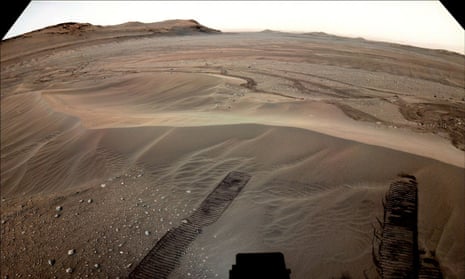
Nasa to test nuclear rockets that could fly astronauts to Mars in record time
Project, in concert with US government agency Darpa, aims to develop pioneering propulsion system for space travel
Nasa has unveiled plans to test nuclear-powered rockets that would fly astronauts to Mars in ultra-fast time.
The agency has partnered with the US government’s Defense Advanced Research Projects Agency (Darpa) to demonstrate a nuclear thermal rocket engine in space as soon as 2027, it announced on Tuesday.
The project is intended to develop a pioneering propulsion system for space travel far different from the chemical systems prevalent since the modern era of rocketry dawned almost a century ago .
“Using a nuclear thermal rocket allows for faster transit time, reducing risk for astronauts,” Nasa said in a press release .
“Reducing transit time is a key component for human missions to Mars , as longer trips require more supplies and more robust systems.”
An additional benefit would be increased science payload capacity, and higher power for instrumentation and communication, according to the agency.
Nasa, which successfully tested its new-era Artemis spacecraft last year as a springboard back to the moon and on to Mars, has hopes of landing humans on the red planet some time in the 2030s as part of its Moon to Mars program.
Using current technology, Nasa says, the 300m-mile journey to Mars would take about seven months . Engineers do not yet know how much time could be shaved off using nuclear technology, but Bill Nelson, the Nasa administrator, said it would allow spacecraft, and humans, to travel in deep space at record speed.
“With the help of this new technology, astronauts could journey to and from deep space faster than ever - a major capability to prepare for crewed missions to Mars,” Nelson said.
Nuclear electric propulsion systems use propellants much more efficiently than chemical rockets but provide a low amount of thrust, the agency says .
A reactor generates electricity that positively charges gas propellants like xenon or krypton, pushing the ions out through a thruster, which drives the spacecraft forward.
Using low thrust efficiently, nuclear electric propulsion systems accelerate spacecraft for extended periods and can propel a Mars mission for a fraction of the propellant of high-thrust systems.
In a statement, Darpa’s director, Dr Stefanie Tompkins, said the agreement was an extension of existing collaboration between the agencies.
“Darpa and Nasa have a long history of fruitful collaboration in advancing technologies for our respective goals, from the Saturn V rocket that took humans to the moon for the first time to robotic servicing and refueling of satellites,” she said.
“The space domain is critical to modern commerce, scientific discovery and national security. The ability to accomplish leap-ahead advances in space technology… will be essential for more efficiently and quickly transporting material to the moon and, eventually, people to Mars.”
Nasa’s Artemis 2 mission, which will send humans around the moon for the first time in more than half a century, is scheduled for 2024. The subsequent Artemis 3 mission, which could come the following year, will land astronauts, including the first woman, on the moon’s surface for the first time since 1972.
- US military
Most viewed
- Share full article
Advertisement
Supported by
NASA Seeks a Nuclear-Powered Rocket to Get to Mars in Half the Time

By Kenneth Chang
In less than four years, NASA could be testing a nuclear rocket in space.
The space agency and the Defense Advanced Research Projects Agency, or DARPA, announced on Wednesday that Lockheed Martin had been selected to design, build and test a propulsion system that could one day speed astronauts on a trip to Mars.
BWX Technologies, based in Lynchburg, Va., will build the nuclear fission reactor at the heart of the engine.
The $499 million program is named DRACO, short for the Demonstration Rocket for Agile Cislunar Operations.

A Number That Sums It Up: 3 to 4 months to Mars
What if a spacecraft could get to Mars in half the time it currently takes?
Every 26 months or so, Mars and Earth are close enough for a shorter journey between the worlds. But even then it is a pretty long trip, lasting seven to nine months. For most of the time, the spacecraft is just coasting through space.
But if the spacecraft could continue accelerating through the first half of the journey and then start slowing down again, the travel time could be slashed. Current rocket engines, which typically rely on the combustion of a fuel like hydrogen or methane with oxygen, are not efficient enough to accomplish that; there is not enough room in the spacecraft to carry that much propellant.
But nuclear reactions, generating energy from the splitting of uranium atoms, are much more efficient.
The DRACO engine would consist of a nuclear reactor that would heat hydrogen from a chilly minus 420 degrees Fahrenheit to a toasty 4,400 degrees, with the hot gas shooting from a nozzle to generate thrust. Greater fuel efficiency could speed up journeys to Mars, reducing the amount of time astronauts spend exposed to the treacherous environment of deep space.
Nuclear propulsion could also have uses closer to home, which is why DARPA is investing in the project. The technology may allow rapid maneuvers of military satellites in orbit around Earth.
Background: Back to the future
Nuclear propulsion for space is not a new idea. In the 1950s and 1960s, Project Orion — financed by NASA, the Air Force and the Advanced Research Projects Agency — contemplated using the explosions of atomic bombs to accelerate spacecraft.
At the same time, NASA and other agencies also undertook Project Rover and Project NERVA, efforts that aimed to develop nuclear-thermal engines similar in concept to those now being pursued by the DRACO program. A series of 23 reactors were built and tested, but none were ever launched to space. Until the end of this program in 1973, NASA had contemplated using nuclear reactors to propel space probes to Jupiter, Saturn and beyond, as well as to provide power at a lunar base.
“The technical capabilities, including early safety protocols, remain viable today,” Tabitha Dodson, the DRACO project manager, said in a news briefing on Wednesday.
A key difference between NERVA and DRACO is that NERVA used weapons-grade uranium for its reactors, while DRACO will use a less-enriched form of uranium.
The reactor would not be turned on until it reached space, part of the precautions to minimize the possibility of a radioactive accident on Earth.
“DRACO has already done all of our preliminary analyses across the entire spectrum of possibilities for accidents and found that we’re all the way down in the low probability and all the way down in the teeny tiny amount of release,” Dr. Dodson said.
What Happens Next: A test flight in orbit
The DRACO development is to culminate with a flight test of the nuclear-thermal engine. The launch is currently scheduled for late 2026 or early 2027.
The demonstration spacecraft would most likely orbit at an altitude between 435 and 1,240 miles, Dr. Dodson said. That is high enough to ensure that it stays in orbit for more than 300 years, or long enough for radioactive elements in the reactor fuel to decay to safe levels, she said.
Using information from a news conference, an earlier version of this article misstated when a flight test of a nuclear-thermal engine could occur. The launch is scheduled for late 2026 or early 2027, not late 2025 or early 2026.
How we handle corrections
Kenneth Chang has been at The Times since 2000, writing about physics, geology, chemistry, and the planets. Before becoming a science writer, he was a graduate student whose research involved the control of chaos. More about Kenneth Chang
What’s Up in Space and Astronomy
Keep track of things going on in our solar system and all around the universe..
Never miss an eclipse, a meteor shower, a rocket launch or any other 2024 event that’s out of this world with our space and astronomy calendar .
Scientists may have discovered a major flaw in their understanding of dark energy, a mysterious cosmic force . That could be good news for the fate of the universe.
A new set of computer simulations, which take into account the effects of stars moving past our solar system, has effectively made it harder to predict Earth’s future and reconstruct its past.
Dante Lauretta, the planetary scientist who led the OSIRIS-REx mission to retrieve a handful of space dust , discusses his next final frontier.
A nova named T Coronae Borealis lit up the night about 80 years ago. Astronomers say it’s expected to put on another show in the coming months.
Is Pluto a planet? And what is a planet, anyway? Test your knowledge here .
- Mobile Site
- Staff Directory
- Advertise with Ars
Filter by topic
- Biz & IT
- Gaming & Culture
Front page layout
Fly fast —
The us government is taking a serious step toward space-based nuclear propulsion, "nasa is looking to go to mars with this system.".
Eric Berger - Jul 26, 2023 9:01 pm UTC
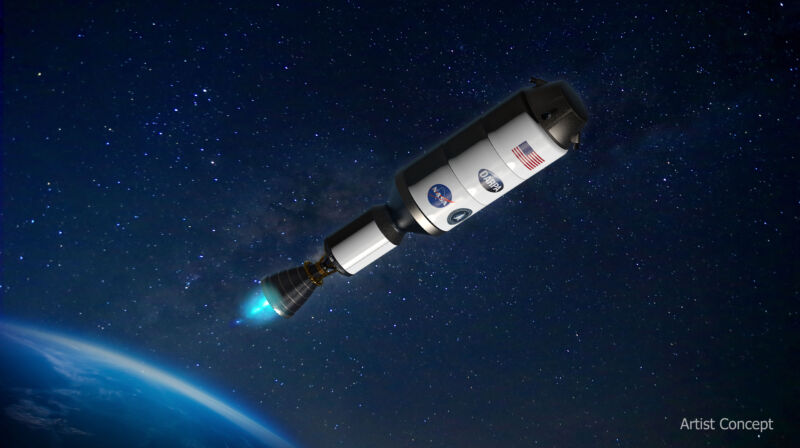
Four years from now, if all goes well, a nuclear-powered rocket engine will launch into space for the first time. The rocket itself will be conventional, but the payload boosted into orbit will be a different matter.
NASA announced Wednesday that it is partnering with the US Department of Defense to launch a nuclear-powered rocket engine into space as early as 2027. The US space agency will invest about $300 million in the project to develop a next-generation propulsion system for in-space transportation.
"NASA is looking to go to Mars with this system," said Anthony Calomino, an engineer at NASA who is leading the agency's space nuclear propulsion technology program. "And this test is really going to give us that foundation."
Back to the future
Traditional chemical propulsion is great for blasting rockets off the surface of the Earth, but such machines are terribly inefficient for moving around the Solar System. They don't sip fuel; they guzzle it. To go as far as Mars would require a huge amount of propellant and liquid oxidizer and take at least six months. For humans to truly become a spacefaring species, there needs to be a better way.
Wernher von Braun, the German engineer who defected to the United States after World War II, recognized the potential of nuclear thermal propulsion even before his Saturn V rocket landed humans on the Moon with chemical propulsion. Eventually, this led to a project called NERVA (Nuclear Engine for Rocket Vehicle Application). It was eventually canceled to help pay for the Space Shuttle.
The basic idea is straightforward: A nuclear reactor rapidly heats up a propellant, probably liquid hydrogen, and then this gas expands and is passed out a nozzle, creating thrust. But engineering all of this for in-space propulsion is challenging, and then there is the regulatory difficulty of building a nuclear reactor and safely launching it into space.
And so nuclear thermal propulsion technology sat on the shelf for a long, long time. Finally, in 2020, the curious folks at the US Defense Advanced Research Projects Agency said they wanted to test a flyable nuclear thermal propulsion system. This planted the seed for a program called the Demonstration Rocket for Agile Cislunar Operations (DRACO). The military was interested in efficiently moving payloads around Earth and the Moon—hence the inclusion of cislunar.
Further Reading
NASA later joined in, with the goal of developing similar technology for a Mars mission. The reason is obvious: A lot of scientists and engineers believe that the only sustainable way to develop a Mars exploration program is through the use of nuclear propulsion.
The plan forward
On Wednesday, NASA and DARPA announced they had selected Lockheed Martin to serve as the primary contractor to assemble the experimental nuclear thermal reactor vehicle (X-NTRV) and its engine. BWX Technologies will be one of Lockheed Martin’s partners, and it will develop the nuclear reactor and fabricate the high-assay low-enriched uranium fuel to power the reactor.
The value of the award is $499 million, said Tabitha Dodson, program manager for the effort at DARPA, in a teleconference with reporters.
NASA will take the lead on developing the nuclear engine, and DARPA will oversee a host of other issues, from the nuclear regulatory requirements to the mission's operations and all analyses of the vehicle's safety. The nuclear reactor will launch in "cold" mode for safety reasons and will not be turned on until it reaches a sufficiently high orbit.
This final orbit has yet to be determined, but it is likely to be 700 to 2,000 km above the surface of the Earth, such that the vehicle's reentry into the planet's atmosphere will take place hundreds of years after any nuclear reactions occur.
The nuclear-powered vehicle will launch within the payload fairing of a Falcon 9 or Vulcan rocket, Dodson said, and look much the same as the upper stage of a conventional rocket. It will consist of a large hydrogen fuel tank, a nuclear reactor, a supporting spacecraft structure, and a nozzle. Once it reaches a safe orbit, the reactor will be turned on. The liquid hydrogen will then be heated from 20 Kelvin—just 20° Celsius above absolute zero—to 2,700 Kelvin in less than a second.
And then? Well, we'll see. There are some unknowns about the performance of a reactor and its uranium fuel in zero gravity.
"It's important to keep in mind that this is a demonstration engine," Dodson said. "And just like any other test of a rocket engine, NASA may need to do a series of follow-on engine development work in order to get closer to their perfect operational engine."
Don’t forget about the hydrogen
This experiment is exciting beyond just the testing of the nuclear engine. While plenty of new technology will go into developing a nuclear reactor that can operate in microgravity, a lot of effort will also go into managing the vehicle's liquid hydrogen propellant.
Until now, liquid hydrogen has only been successfully stored in space for days since it boils above the extremely cold temperature of 20 Kelvin. Dodson said this mission would attempt to store liquid hydrogen in its ultra-cold state for a couple of months, allowing enough time for multiple tests of the nuclear thermal engine.
After the propellant runs out, the engine will no longer be able to operate, even though mission controllers on the ground will still retain communication with the spacecraft. The mission could be extended if it could be robotically refueled, and Dodson said the spacecraft designers are attempting to allow for this possibility.
Perhaps NASA and DARPA will have learned enough by then, however, to move into the development of an operational engine that will fly somewhere.
reader comments
Channel ars technica.

Nuclear fusion breakthrough: What does it mean for space exploration?
Some scientists say nuclear fusion propulsion is inevitable. But how far away is it, given recent breakthroughs?
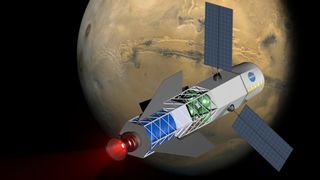
The announcement this week of fusion ignition is a major scientific advancement, one that is decades in the making. More energy was produced than the laser energy used to spark the first controlled fusion triumph.
The result: replicating the fusion that powers the sun .
On Dec. 5, a team at Lawrence Livermore National Laboratory's National Ignition Facility (NIF) achieved the milestone . As noted by Kim Budil, director of the laboratory: "Crossing this threshold is the vision that has driven 60 years of dedicated pursuit — a continual process of learning, building, expanding knowledge and capability, and then finding ways to overcome the new challenges that emerged," Budil said.
The nuclear fusion feat has broad implications, fueling hopes of clean, limitless energy. As for space exploration, one upshot from the landmark research is attaining the long-held dream of future rockets that are driven by fusion propulsion.
But is that prospect still a pipe dream or is it now deemed reachable? If so, how much of a future are we looking at?
Related: Major breakthrough in pursuit of nuclear fusion unveiled by US scientists
Data points
The fusion breakthrough is welcomed and exciting news for physicist Fatima Ebrahimi at the U.S. Department of Energy's (DOE) Princeton Plasma Physics Laboratory in New Jersey.
Get the Space.com Newsletter
Breaking space news, the latest updates on rocket launches, skywatching events and more!
Ebrahimi said the NIF success is extraordinary.
"Any data points obtained showing fusion energy science achievement is fantastic! Fusion energy gain of greater than one is quite an achievement," Ebrahimi said. However, engineering innovations are still requisite for NIF to be commercially viable as a fusion reactor, she added.
Ebrahimi is studying how best to propel humans at greater speeds out to Mars and beyond. The work involves a new concept for a rocket thruster, one that exploits the mechanism behind solar flares .
The idea is to accelerate particles using "magnetic reconnection," a process found throughout the universe , including the surface of the sun. It's when magnetic field lines converge, suddenly separate, and then join together again, producing loads of energy. By using more electromagnets and more magnetic fields, Ebrahimi envisions the ability to create, in effect, a knob-turning way to fine-tune velocity.
As for the NIF victory impacting space exploration, Ebrahimi said for space applications, compact fusion concepts are still needed. "Heavy components for space applications are not favorable," she said.

Necessary precursor
Similar in thought is Paul Gilster, writer/editor of the informative Centauri Dreams website.
"Naturally I celebrate the NIF's accomplishment of producing more energy than was initially put into the fusion experiment. It's a necessary precursor toward getting fusion into the game as a source of power," Gilster told Space.com. Building upon the notable breakthrough is going to take time, he said.
"Where we go as this evolves, and this seems to be several decades away, is toward actual fusion power plants here on Earth . But as to space exploration, we then have to consider how to reduce working fusion into something that can fit the size and weight constraints of a spacecraft," said Gilster.
There's no doubt in Gilster's mind that fusion can be managed for space exploration purposes, but he suspects that's still more than a few decades in the future.
"This work is heartening, then, but it should not diminish our research into alternatives like beamed energy as we consider missions beyond the solar system ," said Gilster.
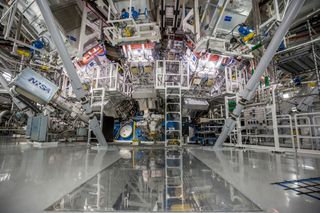
Exhaust speeds
Richard Dinan is the founder of Pulsar Fusion in the United Kingdom. He's also the author of the book "The Fusion Age: Modern Nuclear Fusion Reactors."
"Fusion propulsion is a much simpler technology to apply than fusion for energy. If fusion is achievable, which at last the people are starting see it is, then both fusion energy and propulsion are inevitable," Dinan said. "One gives us the ability to power our planet indefinitely, the other the ability to leave our solar system. It's a big deal, really."
Exhaust speeds generated from a fusion plasma, Dinan said, are calculated to be roughly one-thousand times that of a Hall Effect Thruster, electric propulsion hardware that makes use of electric and magnetic fields to create and eject a plasma.
"The financial implications that go with that make fusion propulsion, in our opinion, the single most important emerging technology in the space economy," Dinan said.
Pulsar Fusion has been busy working on a direct fusion drive initiative, a steady state fusion propulsion concept that's based on a compact fusion reactor.
According to the group's website, Pulsar Fusion has proceeded to a Phase 3 task, manufacturing an initial test unit. Static tests are slated to occur next year, followed by an in-orbit demonstration of the technology in 2027.

Aspirational glow
"The net energy gain reported in the press is certainly a significant milestone," said Ralph McNutt, a physicist and chief scientist for space science at the Johns Hopkins University Applied Physics Laboratory in Laurel, Maryland. "As more comes out, it will be interesting to see what the turning point was that pushed this achievement past the previous unsuccessful attempts," he said.
McNutt said that getting to a commercial electric power station from this recent milestone is likely to be a tough assignment. "But the tortoise did eventually beat the hare. Tenacity is always the virtue when one is handling tough technical problems."
With respect to space exploration, it certainly does not hurt in providing an example that great things can still be accomplished, McNutt said.
"All of that said, it should be still a sobering thought that despite all of the work on NERVA/Rover there is still no working nuclear thermal rocket engine, and the promise of nuclear electric propulsion for space travel only had a brief glimmer with SNAP-10A in April of 1965," recalled McNutt.
The actual use of ICF in a functional spacecraft has been a long-held dream, McNutt said, but that is very unlikely to change for a long time to come.

"Space travel has always been tough. That NASA has 'blazed the trail' that many commercial entities are now following does not mean space has gotten easier, but the new ICF results have added to the aspirational glow on the horizon of the future," McNutt added.
"That said, no one should be fooled into thinking that space will somehow not be tough someday. It's called 'rocket science,' with all that implies in popular culture for a reason," he concluded.
Follow us on Twitter @Spacedotcom or on Facebook .
Join our Space Forums to keep talking space on the latest missions, night sky and more! And if you have a news tip, correction or comment, let us know at: [email protected].

Leonard David is an award-winning space journalist who has been reporting on space activities for more than 50 years. Currently writing as Space.com's Space Insider Columnist among his other projects, Leonard has authored numerous books on space exploration, Mars missions and more, with his latest being "Moon Rush: The New Space Race" published in 2019 by National Geographic. He also wrote "Mars: Our Future on the Red Planet" released in 2016 by National Geographic. Leonard has served as a correspondent for SpaceNews, Scientific American and Aerospace America for the AIAA. He has received many awards, including the first Ordway Award for Sustained Excellence in Spaceflight History in 2015 at the AAS Wernher von Braun Memorial Symposium. You can find out Leonard's latest project at his website and on Twitter.
Boeing's Starliner spacecraft is 'go' for May 6 astronaut launch
Building rockets and looking for life on Venus: Q&A with Rocket Lab's Peter Beck
Watch 2 gorgeous supernova remnants evolve over 20 years (timelapse video)
- bwana4swahili And producing 3.15MJ of output for 300+MJ is somehow a major breakthrough!? We're still a long, long, long way from anything useful!! Reply
- Vernon Brechin In order to embrace the ground-based and spaced-based fusion concepts covered in this article one likely assumes that we have 20-30 years to turn this 'Titanic' around. Such dreamers typically have become masterful at excluding the following warnings from their consciousness. IPCC report: ‘now or never’ if world is to stave off climate disaster https://www.theguardian.com/environment/2022/apr/04/ipcc-report-now-or-never-if-world-stave-off-climate-disaster UN chief: World has less than 2 years to avoid 'runaway climate change' https://thehill.com/policy/energy-environment/406291-un-chief-the-world-has-less-than-2-years-to-avoid-runaway-climate * This statement was made 4-years ago. Reply
- bwana4swahili Always gloom and doom, gloom and doom! Homo sapiens will adapt or die just as billions of species before them. Reply
bwana4swahili said: Always gloom and doom, gloom and doom! Homo sapiens will adapt or die just as billions of species before them.
- Unclear Engineer There is nothing about the climate that is going to kill off all humans by 2025, 2050 or even 2100, even if we continue to emit more CO2 than we pledged. What will happen is that a lot of our coastal infrastructures will be inundated and need to be moved or replaced, and a lot of people will find their climate has changed - some for the worse and some for the better. In the long run, if we continue as we are doing, sea level will top out at about 300' higher than today. The predictions that Earth will become unfit for life are not likely outcomes, because there will be social feedbacks that force changes in our ways. The bigger issue is whether those changes result in wars over migration that will existentially threaten our species in the nearer term. Reply
Unclear Engineer said: There is nothing about the climate that is going to kill off all humans by 2025, 2050 or even 2100, even if we continue to emit more CO2 than we pledged. What will happen is that a lot of our coastal infrastructures will be inundated and need to be moved or replaced, and a lot of people will find their climate has changed - some for the worse and some for the better. In the long run, if we continue as we are doing, sea level will top out at about 300' higher than today. The predictions that Earth will become unfit for life are not likely outcomes, because there will be social feedbacks that force changes in our ways. The bigger issue is whether those changes result in wars over migration that will existentially threaten our species in the nearer term.
- Unclear Engineer Vernon, you are drastically underestimating my credentials and experience, as well as my interest in the natural ecosystems beyond just human comfort. So, please drop the attitude that I am naïve, undereducated or otherwise unaware about the things you are advocating. I have been actually involved in the issues we are discussing for decades, so this is much more than an academic exercise for me. And, I am well aware of the IPCC and other reports on global warming - I have been following the issues since the 1970s, and am updating the projected sea levels (and local land subsidence) for impacts on my home every time there is an update, as well as following the research on the ice sheets in Greenland and Antarctica to see how new knowledge is likely to affect those estimates. I am also working on a solar installation for my property. I am also involved in habitat restorations and preservations in my local area. I don't just post about things that matter, I get out and do things that I hope will matter. So, you are going to have to adopt a more balanced style for discussing the issues if you want to have any effect on my understanding of them. Trying to come across as possessing superior education, experience or knowledge isn't getting you any traction. Debate the issues with facts, please. Reply
- Helio Vernon, ask yourself why RCP8.5 was replaced with RCP4.5? Climate modeling still doesn't have a strong grip on all the variables and how they affect climate, though it is critical that they keep improving this work. I like the use of the phrase, "climate sensitivity", to better address the real effort in climate modeling of all those variables, like the impact from CO2. Language is important and it has been abused. Consider how stupid the phrase "climate denier" sounds, which is, no doubt, intended as an ad hominem. I can't imagine anyone claiming there is no such thing as a climate? I wonder how many realize that more will die from cold than from heat in the next 12 months.? The CDC shows significantly more from cold in the US, which is based on death certificates. Other sources, however, say it is about even. Yet, world-wide, the mortality from cold is likely more than 5 to 1. here] Heat in the winter requires, currently, fossil fuels. Air conditioners made the south livable, also requiring fossil fuels. We are playing with lives of the vulnerable if we move off fossil fuels too quickly, and rhetoric suggests that's the direction being taken. Wind and solar can help but we must understand their limitations. More science, less hullabaloo. Reply
Admin said: Nuclear fusion has broad implications, fueling hopes of clean, limitless energy and the long-held dream of future rockets that are driven by nuclear propulsion. Nuclear fusion breakthrough: What does it mean for space exploration? : Read more
- Unclear Engineer Yes, that is interesting. Pulsar Fusion has made other types of engines, but not fusion based, yet. See https://pulsarfusion.com/ . Considering that their website says "NUCLEAR FUSION SET TO BE THE WORLD’S DOMINANT POWER SOURCE BY 2100", I put them in the "advocate" category rather than the "objective forecaster" category. So, when I read "Pulsar has now proceeded to phase 3, the manufacture of the initial test unit. Static tests are to begin in 2023 followed by an In Orbit Demonstration (IOD) of the technology in 2027," I am hopeful but not overly optimistic. Research groups have been building fusion devices here on Earth for decades, and none are yet "continuous" or even close to it. True, an open system is much easier to run continuously than the closed systems that the other current projects hope to create for electric power production here on Earth's surface. "Containment" becomes "direction" in open systems designed to produce thrust. But, considering how slow the progress has been on other fusion projects, I will be amazed if Pulsar Fusion gets a successful orbital demonstration as early as 5 years from now. Reply
- View All 20 Comments
Most Popular
- 2 Boeing Starliner 1st astronaut flight: Live updates
- 3 US Space Force picks Rocket Lab for 2025 Victus Haze space domain awareness mission
- 4 Exploding stars send out powerful bursts of energy − I'm leading a citizen scientist project to classify and learn about these bright flashes
- 5 Wow! Private space-junk probe snaps historic photo of discarded rocket in orbit
How Nuclear Technology Will Get Us to Mars Faster Than Ever

Lockheed Martin Selected to Develop the
Nuclear-powered draco spacecraft.
We’ll soon have (nuclear) liftoff! Following the first phase of the Demonstration Rocket for Agile Cislunar Operations (DRACO) program, Lockheed Martin was notified by DARPA that we won the contract to develop and demonstrate a nuclear-powered spacecraft. The project will represent a rapid advancement in propulsion technology to benefit exploration and national defense.
DARPA partnered with NASA’s Space Technology Mission Directorate on the DRACO project, as both agencies will benefit from this leading edge technology.
“This is a prime technology that can be used to transport humans and materials to the Moon,” said Kirk Shireman, vice president of Lunar Exploration Campaigns at Lockheed Martin Space. “A safe, reusable nuclear tug spacecraft would revolutionize cislunar operations. With more speed, agility and maneuverability, nuclear thermal propulsion also has many national security applications for cislunar space.”
In addition to our long history and expertise in nuclear controls, Lockheed Martin is excited to partner with BWX Technologies on DRACO to develop the nuclear reactor and produce the special high-assay low-enriched uranium, or HALEU, fuel. The in-space flight demo of the nuclear thermal rocket engine vehicle is slated to launch no later than 2027.
Follow the link below to learn more about Lockheed Martin and DRACO.
You can’t get all the way to Mars without fuel – and a lot of it.
Chemical propulsion has been the standard for spaceflight for decades, but if humans are to travel to Mars, they need a propulsion technology much more powerful.
“When you get into needing the level of power it takes to advance our exploration of the Moon and send humans to Mars, the only way to do it is nuclear power,” said Rob Chambers, Director of Commercial Civil Space Strategy and Business Development at Lockheed Martin.
“If you want to be able to explore cost-effectively, be Earth-independent and make going to Mars feasible, you need nuclear systems.”
How Nuclear Energy Systems Work (Hint: They’re Safe)
Although they’re relatively new – nuclear systems for propulsion or electrical power are simple.
Fission-based systems work by splitting low-enriched uranium atoms in a reactor to create heat. Super-cooled hydrogen is flowed into the reactor and the heat from the uranium quickly turns the hydrogen into a very hot, pressurized gas.
In nuclear thermal propulsion (NTP), the super-hot pressurized hydrogen is funneled out a nozzle to create a powerful thrust. The mechanics of an NTP engine are much simpler and vastly more efficient than chemical propellent engines.
In fission surface power systems, the heat from the splitting of uranium atoms is converted to electricity. These systems can produce at least 40 kilowatts of power and can operate on permanently shadowed regions of the Moon.
One of the mechanics that makes NTP safe is simply that the mechanics wouldn’t happen on Earth.
A traditional chemical propulsion launch vehicle would lift a spacecraft off Earth’s surface and navigate it to a safe Earth orbit far out of the Earth’s atmosphere. Once in this orbit, the nuclear reactor would be turned on, and the fission process would start. This makes handling and launching a reactor with the high assay low enriched uranium (HALEU) fuel very safe.
Defining the level of ground testing that’s needed to prove safe, effective operations in space is part of Lockheed Martin’s current efforts, too.
“Ground testing helps us understand what the expected behavior and limitations of the nuclear reactor are and how we expect it to respond and interact with the control systems that we’re developing,” said John Bendle, Senior Manager, Strategy and Business Development, Human Space Exploration, Lockheed Martin.
Why Nuclear Thermal Propulsion?
In short: speed, efficiency and reusability.
NTP will enable faster space travel than ever before.
Increased speed from NTP means benefits like longer launch windows, less crew exposure to cosmic radiation in space and satellites and robotic spacecraft getting to their destinations quicker or with much higher mass.
The speed of NTP comes from its high-efficiency thrust—upwards of two times more efficient than conventional propulsion systems.
“It could take a hundred launches to get humans to Mars on a chemical propulsion system, but we can get it down to five with a nuclear thermal propulsion system,” said Chambers.
NTP’s efficiency can also enable more abort options during missions.
Other benefits include maximum reusability and extensibility to other missions. NTP allows the use of fewer refuelers than other systems – making it an environmentally cleaner, more efficient way to fuel.
“If we want to get serious about deep space exploration, a reusable nuclear system is a cleaner, more efficient way to achieve our goals,” said Bendle. “NTP will enable us to extend our exploration beyond the Moon more quickly than other alternatives might.”
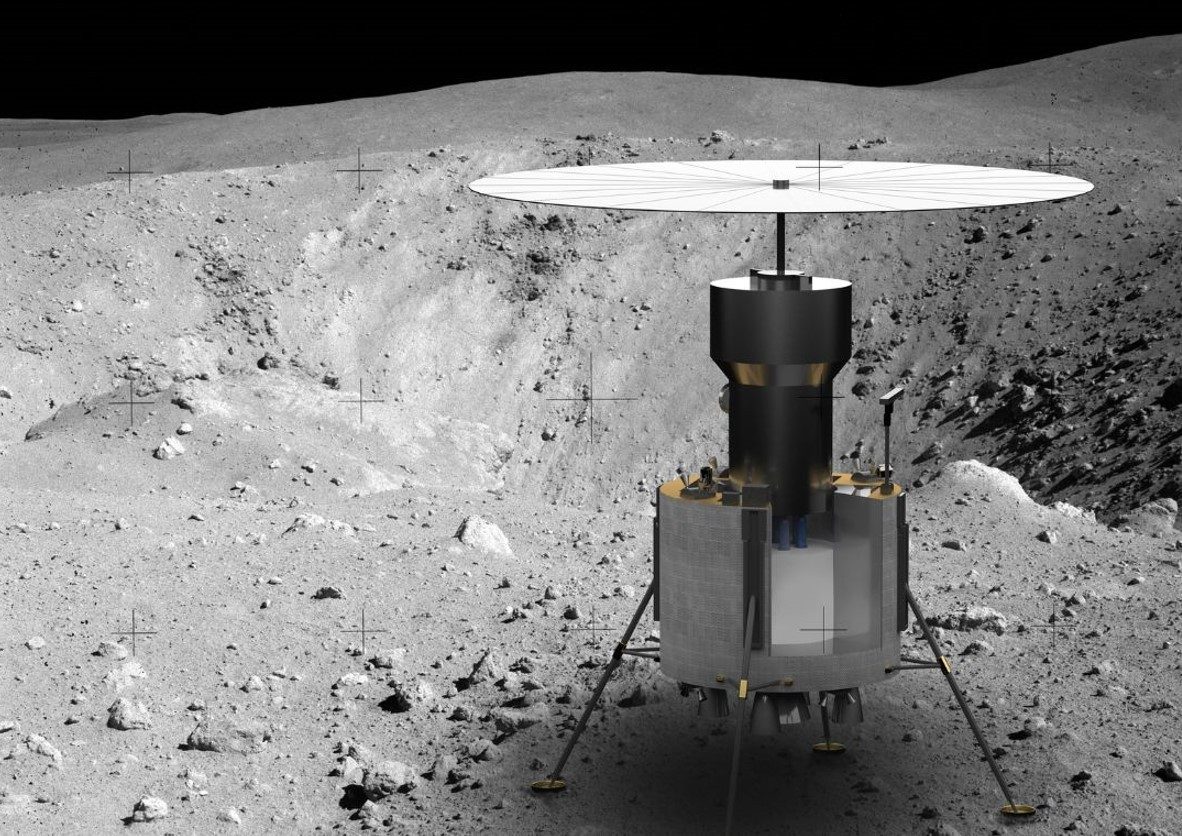
An Economy on the Moon and Other Possibilities
Making safe nuclear systems a reality is within our reach – and with it, so are massive changes in the way we do space exploration.
“Surface fission power would mean a stable, Earth-independent power source on the Moon and Mars,” said Lisa May, Principal Engineer and Next Gen Strategy Lead, Lockheed Martin.
High-power fission-based systems on the Moon would enable splitting lunar water into hydrogen that can be used for propellant, and oxygen for astronauts to breathe.
“We envision a water-based economy on the Moon, where what we need to fuel space travel can be extracted, traded and utilized on the Moon,” said Chambers.
Time to Turn Vision into Reality
Lockheed Martin’s space nuclear systems work includes three current contracts – a partnership with BWXT Technologies on both nuclear thermal reactor and fission surface power concepts for NASA and the Department of Energy , and a contract with the Defense Advanced Research Projects Agency to develop a spacecraft concept design with NTP capability.
While nuclear systems are an emerging field, Lockheed Martin has a long history and expertise in nuclear controls, having supported instrumentation and controls for both terrestrial power plants and Naval nuclear reactors. Lockheed Martin’s expertise in avionics, mission control and integration give us leverage.
“Our discriminator also comes from our deep space exploration heritage, which requires the ability to do high-technology, first-of-a-kind missions,” said May. “We’ve also invested heavily in cryogenic hydrogen storage and transfer, as well as the overall nuclear reactor controls.”
The company also built the radioisotope thermoelectric generators for NASA planetary missions such as Viking, Pioneer, Voyager, Apollo, Cassini and New Horizons.
- ASME Foundation
- Sections & Divisions
- Sign In/Create Account
The Future of Nuclear Rockets for Space Travel
- Topics & Resources
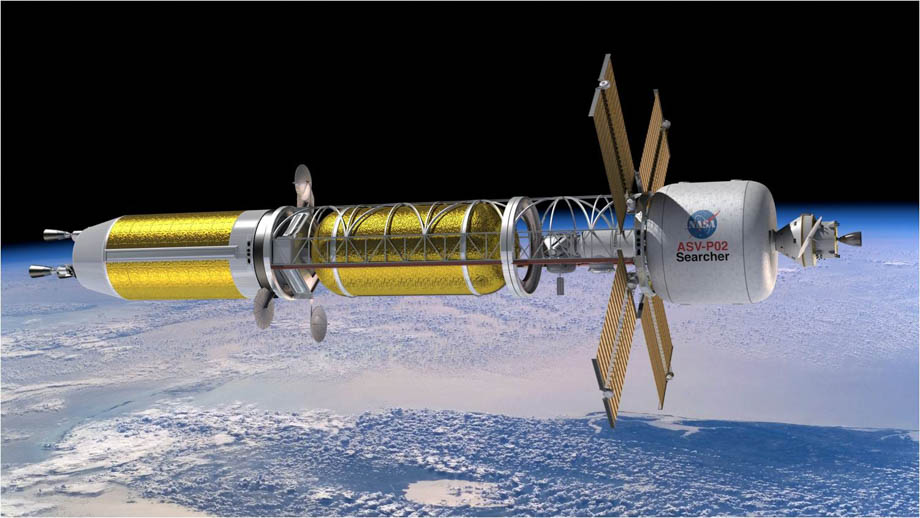
Visionary view of a Nuclear Thermal Propulsion enabled spacecraft mission outward bound to Mars. Image: NASA/Marshall Space Flight Center
Date Published:
Jan 24, 2020
Carlos M. Gonzalez
The Nuclear Rockets of the 20 th Century
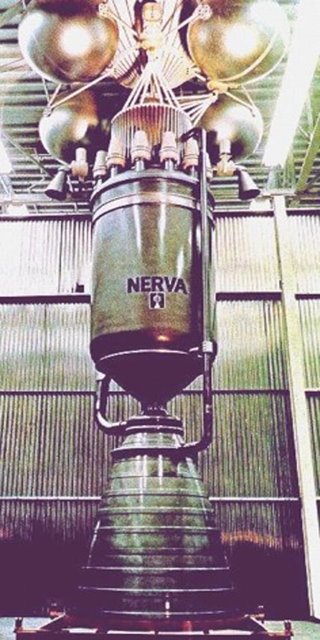
The Nuclear Rockets of the 21 st Century
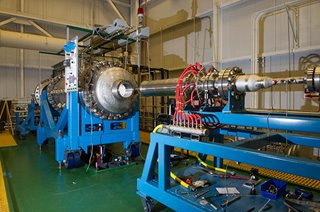
Testing Different Nuclear Fuel Types
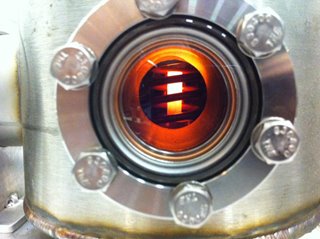
Nuclear Rockets and Travel to Mars
Related content.

ASME Membership (1 year) has been added to your cart.
The price of yearly membership depends on a number of factors, so final price will be calculated during checkout.
You are now leaving ASME.org
For IEEE Members
Ieee spectrum, follow ieee spectrum, support ieee spectrum, enjoy more free content and benefits by creating an account, saving articles to read later requires an ieee spectrum account, the institute content is only available for members, downloading full pdf issues is exclusive for ieee members, downloading this e-book is exclusive for ieee members, access to spectrum 's digital edition is exclusive for ieee members, following topics is a feature exclusive for ieee members, adding your response to an article requires an ieee spectrum account, create an account to access more content and features on ieee spectrum , including the ability to save articles to read later, download spectrum collections, and participate in conversations with readers and editors. for more exclusive content and features, consider joining ieee ., join the world’s largest professional organization devoted to engineering and applied sciences and get access to all of spectrum’s articles, archives, pdf downloads, and other benefits. learn more →, join the world’s largest professional organization devoted to engineering and applied sciences and get access to this e-book plus all of ieee spectrum’s articles, archives, pdf downloads, and other benefits. learn more →, access thousands of articles — completely free, create an account and get exclusive content and features: save articles, download collections, and talk to tech insiders — all free for full access and benefits, join ieee as a paying member., nuclear-powered rockets get a second look for travel to mars , nasa is investing in the technology for future space exploration missions.
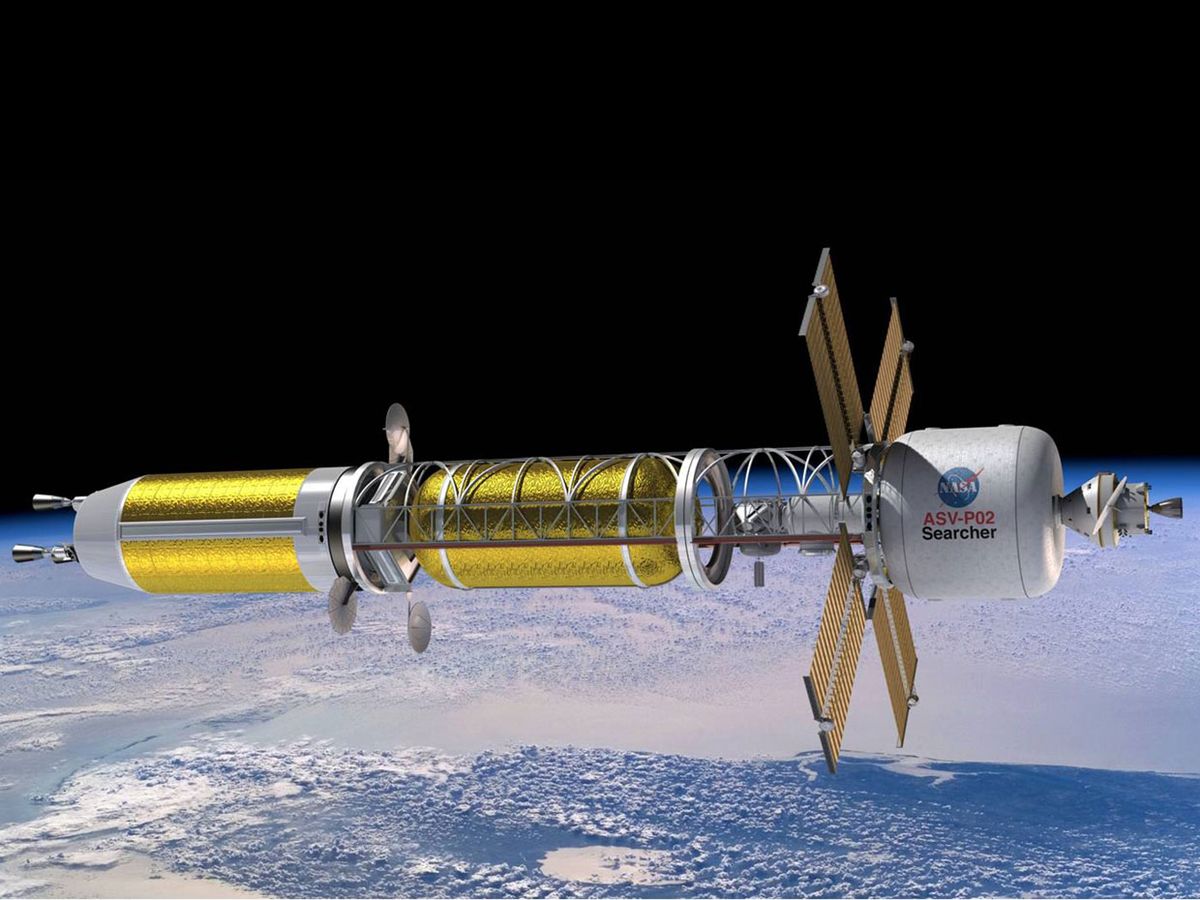
Atoms for Propulsion: Rockets powered by nuclear fission or fusion are now vying to become the preferred (and faster) means of traveling the solar system.
For all the controversy they stir up on Earth, nuclear reactors can produce the energy and propulsion needed to rapidly take large spacecraft to Mars and, if desired, beyond. The idea of nuclear rocket engines dates back to the 1940s . This time around, though, plans for interplanetary missions propelled by nuclear fission and fusion are being backed by new designs that have a much better chance of getting off the ground.
Crucially, the nuclear engines are meant for interplanetary travel only, not for use in the Earth's atmosphere. Chemical rockets launch the craft out beyond low Earth orbit. Only then does the nuclear propulsion system kick in.
The challenge has been making these nuclear engines safe and lightweight. New fuels and reactor designs appear up to the task, as NASA is now working with industry partners for possible future nuclear-fueled crewed space missions. “Nuclear propulsion would be advantageous if you want to go to Mars and back in under two years," says Jeff Sheehy , chief engineer in NASA's Space Technology Mission Directorate . To enable that mission capability, he says, “a key technology that needs to be advanced is the fuel."
Specifically, the fuel needs to endure the superhigh temperatures and volatile conditions inside a nuclear thermal engine. Two companies now say their fuels are sufficiently robust for a safe, compact, high-performance reactor. In fact, one of these companies has already delivered a detailed conceptual design to NASA.
Nuclear thermal propulsion uses energy released from nuclear reactions to heat liquid hydrogen to about 2,430 °C—some eight times the temperature of nuclear-power-plant cores. The propellant expands and jets out the nozzles at tremendous speeds. This can produce twice the thrust per mass of propellant as compared to that of chemical rockets, allowing nuclear-powered ships to travel longer and faster. Plus, once at the destination, be it Saturn's moon Titan or Pluto, the nuclear reactor could switch from propulsion system to power source, enabling the craft to send back high-quality data for years.
Getting enough thrust out of a nuclear rocket used to require weapons-grade, highly enriched uranium. Low-enriched uranium fuels, used in commercial power plants, would be safer to use, but they can become brittle and fall apart under the blistering temperatures and chemical attacks from the extremely reactive hydrogen.
However, Ultra Safe Nuclear Corp. Technologies (USNC-Tech), based in Seattle, uses a uranium fuel enriched to below 20 percent, which is a higher grade than that of power reactors but “can't be diverted for nefarious purposes, so it greatly reduces proliferation risks," says director of engineering Michael Eades. The company's fuel contains microscopic ceramic-coated uranium fuel particles dispersed in a zirconium carbide matrix. The microcapsules keep radioactive fission by-products inside while letting heat escape.
Lynchburg, Va.–based BWX Technologies , is working under a NASA contract to look at designs using a similar ceramic composite fuel—and also examining an alternate fuel form encased in a metallic matrix. “We've been working on our reactor design since 2017," says Joe Miller, general manager for the company's advanced technologies group.
Both companies' designs rely on different kinds of moderators. Moderators slow down energetic neutrons produced during fission so they can sustain a chain reaction, instead of striking and damaging the reactor structure. BWX intersperses its fuel blocks between hydride elements, while USNC-Tech's unique design integrates a beryllium metal moderator into the fuel. “Our fuel stays in one piece, survives the hot hydrogen and radiation conditions, and does not eat all the reactor's neutrons," Eades says.
Princeton Plasma Physics Laboratory scientists are using this experimental reactor to heat fusion plasmas up to one million degrees C—on the long journey to developing fusion-powered rockets for interplanetary travel.
There is another route to small, safe nuclear-powered rockets, says Samuel Cohen at Princeton Plasma Physics Laboratory : fusion reactors. Mainline fusion uses deuterium and tritium fuels, but Cohen is leading efforts to make a reactor that relies on fusion between deuterium atoms and helium-3 in a high-temperature plasma, which produces very few neutrons. “We don't like neutrons because they can change structural material like steel to something more like Swiss cheese and can make it radioactive," he says. The Princeton lab's concept, called Direct Fusion Drive , also needs much less fuel than conventional fusion, and the device could be one-thousandth as large, Cohen says.
Fusion propulsion could in theory far outperform fission-based propulsion, because fusion reactions release up to four times as much energy, says NASA's Sheehy. However, the technology isn't as far along and faces several challenges, including generating and containing the plasma and efficiently converting the energy released into directed jet exhaust. “It could not be ready for Mars missions in the late 2030s," he says.
USNC-Tech, by contrast, has already made small hardware prototypes based on its new fuel. “We're on track to meet NASA's goal to have a half-scale demonstration system ready for launch by 2027," says Eades. The next step would be to build a full-scale Mars flight system, one that could very well drive a 2035 Mars mission.
This article appears in the January 2021 print issue as “Nuclear-Powered Rockets Get a Second Look."
- A Helicopter Will Try to Catch a Rocket Booster Mid-Air - IEEE Spectrum ›
- Pentagon Aims to Demo a Nuclear Spacecraft Within 5 Years - IEEE Spectrum ›
- DARPA and NASA Aim to Test Nuclear Rocket by 2026 - IEEE Spectrum ›
Prachi Patel is a freelance journalist based in Pittsburgh. She writes about energy, biotechnology, materials science, nanotechnology, and computing.
Will Human Soldiers Ever Trust Their Robot Comrades?
Video friday: racer heavy, as ukraine builds new reactors, renewables beckon, related stories, the space-based drug factory that can’t come home, the race for the next-gen space station, can this diy rocket program send an astronaut to space.

To safely explore the solar system and beyond, spaceships need to go faster – nuclear-powered rockets may be the answer
Professor of Aerospace Engineering Sciences, University of Colorado Boulder
Disclosure statement
Iain Boyd receives funding from the following sources, none of it is related to space propulsion: Office of Naval Research Lockheed-Martin Northrop-Grumman L3-Harris
University of Colorado provides funding as a member of The Conversation US.
View all partners
With dreams of Mars on the minds of both NASA and Elon Musk , long-distance crewed missions through space are coming. But you might be surprised to learn that modern rockets don’t go all that much faster than the rockets of the past.
There are a lot of reasons that a faster spaceship is a better one, and nuclear-powered rockets are a way to do this. They offer many benefits over traditional fuel-burning rockets or modern solar-powered electric rockets, but there have been only eight U.S. space launches carrying nuclear reactors in the last 40 years.
However, in 2019 the laws regulating nuclear space flights changed and work has already begun on this next generation of rockets.
Why the need for speed?
The first step of a space journey involves the use of launch rockets to get a ship into orbit. These are the large fuel-burning engines people imagine when they think of rocket launches and are not likely to go away in the foreseeable future due to the constraints of gravity.
It is once a ship reaches space that things get interesting. To escape Earth’s gravity and reach deep space destinations, ships need additional acceleration. This is where nuclear systems come into play. If astronauts want to explore anything farther than the Moon and perhaps Mars, they are going to need to be going very very fast. Space is massive , and everything is far away .
There are two reasons faster rockets are better for long-distance space travel: safety and time.
Astronauts on a trip to Mars would be exposed to very high levels of radiation which can cause serious long-term health problems such as cancer and sterility . Radiation shielding can help, but it is extremely heavy, and the longer the mission, the more shielding is needed. A better way to reduce radiation exposure is to simply get where you are going quicker.
But human safety isn’t the only benefit. As space agencies probe farther out into space, it is important to get data from unmanned missions as soon as possible. It took Voyager-2 12 years just to reach Neptune , where it snapped some incredible photos as it flew by. If Voyager-2 had a faster propulsion system, astronomers could have had those photos and the information they contained years earlier.
Speed is good. But why are nuclear systems faster?


Systems of today
Once a ship has escaped Earth’s gravity, there are three important aspects to consider when comparing any propulsion system:
- Thrust – how fast a system can accelerate a ship
- Mass efficiency – how much thrust a system can produce for a given amount of fuel
- Energy density – how much energy a given amount of fuel can produce
Today, the most common propulsion systems in use are chemical propulsion – that is, regular fuel-burning rockets – and solar-powered electric propulsion systems.
Chemical propulsion systems provide a lot of thrust, but chemical rockets aren’t particularly efficient, and rocket fuel isn’t that energy-dense. The Saturn V rocket that took astronauts to the Moon produced 35 million Newtons of force at liftoff and carried 950,000 gallons of fuel . While most of the fuel was used in getting the rocket into orbit, the limitations are apparent: It takes a lot of heavy fuel to get anywhere.
Electric propulsion systems generate thrust using electricity produced from solar panels. The most common way to do this is to use an electrical field to accelerate ions, such as in the Hall thruster . These devices are commonly used to power satellites and can have more than five times higher mass efficiency than chemical systems. But they produce much less thrust – about three Newtons , or only enough to accelerate a car from 0-60 mph in about two and a half hours. The energy source – the Sun – is essentially infinite but becomes less useful the farther away from the Sun the ship gets.
One of the reasons nuclear-powered rockets are promising is because they offer incredible energy density. The uranium fuel used in nuclear reactors has an energy density that is 4 million times higher than hydrazine, a typical chemical rocket propellant. It is much easier to get a small amount of uranium to space than hundreds of thousands of gallons of fuel.
So what about thrust and mass efficiency?
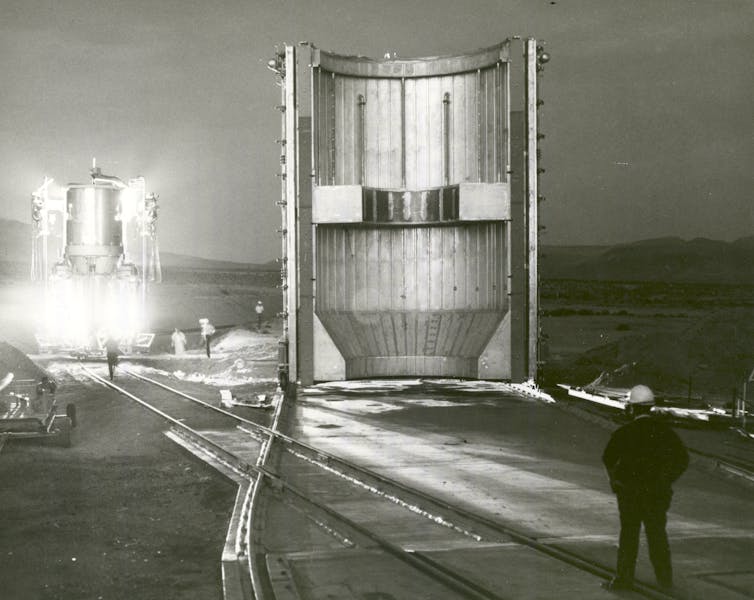
Two options for nuclear
Engineers have designed two main types of nuclear systems for space travel.
The first is called nuclear thermal propulsion . These systems are very powerful and moderately efficient. They use a small nuclear fission reactor – similar to those found in nuclear submarines – to heat a gas, such as hydrogen, and that gas is then accelerated through a rocket nozzle to provide thrust. Engineers from NASA estimate that a mission to Mars powered by nuclear thermal propulsion would be 20%-25% shorter than a trip on a chemical-powered rocket .
Nuclear thermal propulsion systems are more than twice as efficient as chemical propulsion systems – meaning they generate twice as much thrust using the same amount of propellant mass – and can deliver 100,000 Newtons of thrust . That’s enough force to get a car from 0-60 mph in about a quarter of a second.
The second nuclear-based rocket system is called nuclear electric propulsion. No nuclear electric systems have been built yet , but the idea is to use a high-power fission reactor to generate electricity that would then power an electrical propulsion system like a Hall thruster. This would be very efficient, about three times better than a nuclear thermal propulsion system . Since the nuclear reactor could create a lot of power, many individual electric thrusters could be operated simultaneously to generate a good amount of thrust.
Nuclear electric systems would be the best choice for extremely long-range missions because they don’t require solar energy, have very high efficiency and can give relatively high thrust. But while nuclear electric rockets are extremely promising, there are still a lot of technical problems to solve before they are put into use.

Why aren’t there nuclear powered rockets yet?
Nuclear thermal propulsion systems have been studied since the 1960s but have not yet flown in space.
Regulations first imposed in the U.S. in the 1970s essentially required case-by-case examination and approval of any nuclear space project from multiple government agencies and explicit approval from the president. Along with a lack of funding for nuclear rocket system research , this environment prevented further improvement of nuclear reactors for use in space.
That all changed when the Trump administration issued a presidential memorandum in August 2019. While upholding the need to keep nuclear launches as safe as possible, the new directive allows for nuclear missions with lower amounts of nuclear material to skip the multi-agency approval process . Only the sponsoring agency, like NASA, for example, needs to certify that the mission meets safety recommendations. Larger nuclear missions would go through the same process as before.
Along with this revision of regulations, NASA received US$100 million in the 2019 budget to develop nuclear thermal propulsion. DARPA is also developing a space nuclear thermal propulsion system to enable national security operations beyond Earth orbit.
After 60 years of stagnation, it’s possible a nuclear-powered rocket will be heading to space within a decade. This exciting achievement will usher in a new era of space exploration. People will go to Mars and science experiments will make new discoveries all across our solar system and beyond.
[ You’re too busy to read everything. We get it. That’s why we’ve got a weekly newsletter. Sign up for good Sunday reading. ]
- Space Shuttle
- Space exploration
- Donald Trump
- Nuclear fission
- Nuclear fuel
- Rocket Engine

Program Manager, Teaching & Learning Initiatives

Lecturer/Senior Lecturer, Earth System Science (School of Science)

Sydney Horizon Educators (Identified)

Deputy Social Media Producer

Associate Professor, Occupational Therapy
- Skip to main content
- Keyboard shortcuts for audio player
Could Nuclear Power Aid In Travel To Mars?

Geoff Brumfiel
Nuclear power is potentially dangerous. So is sending humans to Mars. But some researchers think a nuclear-powered rocket might be the best way to travel to the red planet.
MARY LOUISE KELLY, HOST:
On Mars, NASA's Perseverance rover is settling in after landing last week. The space agency also hopes one day to send people to the red planet. But getting there will be tough. NPR's Geoff Brumfiel reports that some experts say the best way to do it might be with a nuclear-powered rocket.
GEOFF BRUMFIEL, BYLINE: Sending people to Mars and back again is a huge undertaking.
ROGER MYERS: There are many factors that need to be considered, including such things as, how fast can you get there? How long do you have to stay on Mars? How quickly and how reliably can you get back?
BRUMFIEL: Roger Myers is a private consultant who used to work for NASA. Those questions, he says, are all really about one thing - minimizing the time from when astronauts leave Earth to when they return. The trip must be as fast as possible, but going fast takes fuel. For even the most basic trip to Mars...
MYERS: I have to launch hundreds, if not a thousand, tons of fuel.
BRUMFIEL: Fuel that would come from Earth on many dozens of little rockets used to gas up a larger Mars-bound spacecraft. It would be expensive and dangerous, and it would still leave astronauts with a 500-day stay on the Martian surface while they waited for Earth and Mars to align for a trip back home. But there is an alternative - nuclear-powered rockets.
VISHAL PATEL: If you want to go to Mars, nuclear is a smart choice.
BRUMFIEL: Vishal Patel is a nuclear rocket scientist with a company called Ultra Safe Nuclear Corporation. They're working on a version of a rocket that would use a nuclear reactor. The reactor would heat hydrogen gas and shoot it out a nozzle. It's way more efficient than a chemical engine. A nuclear rocket could make a round-trip mission possible in as little as half the time needed using conventional rockets. It would also allow astronauts to turn back towards home if they encountered an emergency at the start of their trip. Patel recognizes that launching a nuclear reactor from Earth might make people nervous. But, he says, Ultra Safe Nuclear Corporation is working hard to make it ultrasafe.
PATEL: We'll be using conventional rockets to get it up into space, and we'll have safety measures in place, like, just in case the chemical rocket does malfunction.
BRUMFIEL: Even if the chemical rocket exploded on the way up, the reactor would be safe, and the nuclear rocket wouldn't fire until astronauts were far from the Earth. Patel says so far, the design looks promising.
PATEL: The chemistry looks good. The nuclear physics looks good. The manufacturing seems to be going in the right direction.
BRUMFIEL: The reactor Patel and his colleagues have worked on exists mainly as a computer model right now, but America has already built nuclear rockets.
(SOUNDBITE OF ARCHIVED RECORDING)
UNIDENTIFIED PERSON: Here, in the mid-1950s, scientists set about to determine if nuclear energy really could be used to provide rocket propulsion.
BRUMFIEL: In the Nevada desert, scientists repeatedly fired nuclear rocket engines.
UNIDENTIFIED PERSON: Each test brought the scientists a little closer to the performance they were seeking.
BRUMFIEL: But the program was cancelled over costs. Since then, nuclear rocket technology has developed in fits and starts. And meanwhile, Roger Myers says other technologies have ended up dominating space travel.
MYERS: We can do a tremendous amount of fantastic science with robots, as we're discovering today, right?
SWATI MOHAN: Touchdown confirmed. Perseverance safely on the surface of Mars, ready to begin seeking the signs of past life.
BRUMFIEL: To get to that next step of landing people, Myers says it may be time for nuclear rockets.
MYERS: If we decide to send humans to Mars, nuclear propulsion is very likely going to be central to that journey.
BRUMFIEL: Myer (ph) co-chaired a committee of the U.S. National Academies, which recommended NASA ramp up spending on nuclear research now for a trip towards the end of the 2030s. NASA says it's reviewing the group's findings.
Geoff Brumfiel, NPR News, Washington.
(SOUNDBITE OF MUSIC)
Copyright © 2021 NPR. All rights reserved. Visit our website terms of use and permissions pages at www.npr.org for further information.
NPR transcripts are created on a rush deadline by an NPR contractor. This text may not be in its final form and may be updated or revised in the future. Accuracy and availability may vary. The authoritative record of NPR’s programming is the audio record.

RocketStar Inc's Breakthrough in Space Travel: The Nuclear Fusion Drive
I n the realm of space exploration and satellite deployment, propulsion technology is the linchpin to achieving ever-greater milestones. Imagine a spacecraft that harnesses the power of nuclear fusion, an energy source that mimics the processes powering our own sun, to journey through the cosmos. This isn’t a scene from a science fiction novel; it’s the current breakthrough from RocketStar Inc. with their unveiling of the FireStar Drive—the world’s first electric propulsion system bolstered by nuclear fusion.
RocketStar’s technological marvel, the FireStar Drive, marks a significant advance from traditional chemical and electric propulsion methods. By employing a fusion-enhanced pulsed plasma thruster that ionizes water vapor to generate high-speed protons, which then induce fusion reactions with boron nuclei, this system can increase the base propulsion unit’s thrust by an impressive 50%. The fusion process, likened to an afterburner in a jet engine, injects boron into the thruster’s exhaust, creating a fusion-fission reaction that supercharges the engine’s capabilities.
The genesis of this innovation was a collaborative project for AFWERX—an Air Force Work Project—during which the concept of introducing boronated water into a pulsed plasma thruster’s exhaust was first realized. Not only did this produce alpha particles and gamma rays—indicators of nuclear fusion—but subsequent testing at Georgia Tech’s High Power Electric Propulsion Laboratory showcased a significant performance boost, confirming the potential of this groundbreaking propulsion technology.
Adam Hecht, Professor of Nuclear Engineering at the University of New Mexico, highlighted the paradigm shift this represents: “RocketStar has not just incrementally improved a propulsion system, but taken a leap forward by applying a novel concept, creating a fusion-fission reaction in the exhaust.”
This propulsion system is not a distant possibility—it’s swiftly approaching operational status. RocketStar is already prepping the M1.5 thruster, the current iteration of their technology, for in-space performance evaluation aboard D-Orbit’s OTV ION Satellite Carrier on SpaceX Transporter missions in July and October this year.
“The M1.5 is not just a step toward the future—it’s a giant leap,” said Matteo Lorenzoni, Head of Sales at D-Orbit. “We are very happy to have the opportunity to work alongside RocketStar and contribute to the demonstration of the M1.5. We just integrated the thruster onto the ION Satellite Carrier, and look forward to witnessing its performance in orbit.”
Additionally, February 2025 will see an in-space demonstration of the FireStar Drive as a hosted payload on Rogue Space System’s Barry-2 spacecraft. Brent Abbott, CRO at Rogue Space Systems, stated, “We are very excited to test FireStar for RocketStar. We look forward to considering it for future Rogue missions.”
RocketStar is not stopping at propulsion. Their ambitious vision encompasses a suite of cutting-edge technologies, from aerospike rocket engines to digital signal processing (DSP) systems that enable advanced space communications and radar capabilities.
As space agencies and commercial entities push further into the final frontier, RocketStar’s FireStar Drive promises to be a key component in overcoming the challenges of deep space travel. Its inception, sparked by a simple conference doodle and nurtured through innovative collaboration, is now set to propel the industry forward, reminding us that sometimes, the most profound advancements start with the simplest ideas.
Relevant articles:
– World’s 1st nuclear fusion-powered electric propulsion drive unveiled
– RocketStar tests fusion-enhanced in-space propulsion process , Aerospace Testing International, Fri, 22 Mar 2024 10:25:44 GMT
– enhanced electric thruster for spacecraft , Space Daily, Thu, 21 Mar 2024 10:35:35 GMT
– RocketStar Announces Successful Demonstration of Fusion-Enhanced Pulsed Plasma Electric Propulsion , GlobeNewswire, Wed, 20 Mar 2024 16:31:20 GMT
![In the realm of space exploration and satellite deployment, propulsion technology is the linchpin to achieving ever-greater milestones. Imagine a spacecraft that harnesses the power of nuclear fusion, an energy source that mimics the processes powering our own sun, to journey through the cosmos. This isn’t a scene from a science fiction novel; it’s the […] In the realm of space exploration and satellite deployment, propulsion technology is the linchpin to achieving ever-greater milestones. Imagine a spacecraft that harnesses the power of nuclear fusion, an energy source that mimics the processes powering our own sun, to journey through the cosmos. This isn’t a scene from a science fiction novel; it’s the […]](https://img-s-msn-com.akamaized.net/tenant/amp/entityid/AA1nNskR.img?w=768&h=512&m=6)
- The Inventory
Support Quartz
Fund next-gen business journalism with $10 a month
Free Newsletters
NASA will test sunlight-powered space travel after the launch of a solar sail
The mission rode aboard rocket lab's electron, reusing one of the rocket's boosters for the first time.
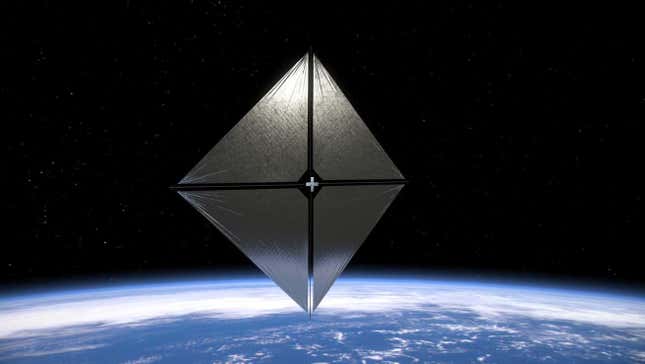
A new experimental mission by NASA is now flying in orbit, aiming to use photons from the Sun to propel its way to higher altitudes.
Related Content
Update: April 24, 8:33 a.m. ET : Rocket Lab’s Electron blasted off at 6:32 p.m. ET on April 23, successfully delivering both payloads to low Earth orbit. The short delay was on account of issues with ground equipment.
Original article follows.
The Advanced Composite Solar Sail System (ACS3) is scheduled for launch on Tuesday during a launch window that opens at 6 p.m. ET. The mission will lift off on board a Rocket Lab Electron rocket from the company’s Launch Complex 1 on the Mahia Peninsula of New Zealand. You can tune in to the launch through Rocket Lab’s live stream on its website or watch it through the feed below.
NASA’s ACS3 is designed to test new materials and deployable structures for solar sail propulsion systems, including new composite booms that will be used to unfurl the solar sail once it reaches orbit. The composite booms are made from a polymer material; they’re lightweight while still being stiff and resistant to bending and warping when exposed to different temperatures. They work the same way as a sailboat’s boom, except they are designed to catch the propulsive power of sunlight rather than wind. Once unfurled, the solar sail will stretch across 30 feet (9 meters) per side.
Solar sails run on photons from the Sun, causing small bursts of momentum that propel the spacecraft farther away from the star. If a spacecraft is able to surpass the drag from Earth’s atmosphere, it could potentially reach very high altitudes.
Rocket Lab’s Electron will deploy the microwave-sized cubesat about 600 miles (966 kilometers) above Earth, which is roughly twice the altitude of the International Space Station. From there, the solar sail will be high enough to gain altitude and overcome atmospheric drag using the tiny force of sunlight on the sail, which is roughly equivalent to the weight of a paperclip resting on your palm, according to NASA .
NASA isn’t the only one being experimental on this mission. Rocket Lab is reusing an Electron booster for the first time during the upcoming launch. The company’s “Beginning Of The Swarm” mission will launch its Electron rocket with a booster that was already used for a previous launch .
On January 31, the “Four Of A Kind” mission saw the Electron rocket’s first stage fall back towards Earth with the help of a parachute before splashing down in the Pacific Ocean around 17 minutes after liftoff. The company recovered the rocket booster and is now reusing it for another flight. Rocket Lab has been experimenting with Electron’s reusability, hoping to inch itself closer to its main industry rival SpaceX. Electron’s upcoming launch will be a major test of the company’s ability to reuse the two-stage vehicle.
The Electron rocket will also be carrying NEONSAT-1, an Earth observation satellite for the Korea Advanced Institute of Science and Technology.
A version of this article originally appeared on Gizmodo .
📬 Sign up for the Daily Brief
Our free, fast, and fun briefing on the global economy, delivered every weekday morning.
Ukraine-Russia war latest: Fighting 'intensifies in eastern Ukraine as troops fall back'; UK estimates 450,000 Russian losses since war began
Gen Oleksandr Syrskyi says his troops have taken up new positions west of Berdychi, Semenivka and Novomykhailivka in order to conserve their forces while armed forces minister Leo Docherty tells the UK Defence Journal tens of thousands have deserted Russian's military since February 2022.
Sunday 28 April 2024 17:45, UK
- Fighting intensifies in eastern Ukraine as troops fall back
- UK minister estimates 450,000 Russian losses since war began
- Tajikistan citizens warned not to travel to Russia
- 'Well-provisioned' Ukrainian troops could prevent Russian advances
- Russia destroys 17 drones launched by Ukraine
- Explained : Why is Chasiv Yar the next target for Russia?
- Your questions answered: Will Ukraine launch another spring offensive?
- Listen to the Sky News Daily above and tap here to follow wherever you get your podcasts
- Live reporting by Emily Mee and, earlier, Lauren Russell
Police have arrested a 57-year-old Russian on suspicion of murder following the killings yesterday evening, German news agency dpa reported.
The two Ukrainians were 23 and 36 years old, and lived in the southern German county of Garmisch-Partenkirchen.
They were killed at a shopping centre in the village of Murnau in Upper Bavaria.
The names of the victims and suspect have not been released due to German privacy rules.
It is not clear if the men knew each other.
More than one million Ukrainian refugees fled to Germany following Russia's invasion of Ukraine in 2022.
Donald Trump's stance on Ukraine is "not as black and white as some people think", the Polish foreign minister has said.
The former US president, who is running for election again this year, has said he will not commit to providing Ukraine with defence assistance.
Republicans aligned with Mr Trump were also the reason behind a six-month delay to aid for Ukraine.
But foreign minister Radoslaw Sikorski said in an interview with the Axel Springer media company that Mr Trump had sent Ukraine anti-tank missiles before Russia's invasion "when others were not doing it".
He was referring to Javelin anti-tank missiles supplied by the US in 2018.
Mr Sikorski also said Mr Trump was "right in urging us all in Europe to spend more on defence".
He said he "did not hear any protests from Trump" once the $61bn aid package for Ukraine was approved.
"So, I hope that candidate Trump has seen that this opposition to helping Ukraine is not actually popular in the United States, that it is harming his chances [to be re-elected]," he added.
Earlier we reported that a top Ukrainian general said troops had fallen back from three villages in the east of the country.
We can now bring you more from Oleksandr Syrskyi, the chief of Ukraine's armed forces, about the situation on the ground.
Mr Syrskyi said the Donetsk region (in the east) remains one of the hottest sectors of the frontline as Russia continues its offensive.
He described the situation in the eastern cities of Pokrovsk and Kurakhove as "the most difficult one" now.
Russia is reportedly using up to four brigades (anywhere from an estimated 8,000 to 32,000 personnel) to conduct assault operations in the direction of both the cities, which lie west of Avdiivka, which was captured earlier this year.
Mr Syrskyi said the situation is changing "dynamically" on the frontline as a result.
Meanwhile, Mr Syrskyi said the situation in the south also remains "intense" as Russia tries to advance near the village of Krynky in Kherson.
It also wants to advance towards the villages of Robotyne and Verbove villages in Zaporizhzhia.
Since 2023, there's been a record 30% increase in Russian men aged 31-59 with disabilities, the UK's Ministry of Defence says.
In data provided by the MoD, there were 2.17 million Russian men aged 31-59 with disabilities, up from 1.67 million the year before.
It said the increase may be down to a growth in military casualties.
Two people have been injured after Russian strikes in the cities of Kupiansk and Vovchansk, local authorities have said.
A 52-year-old was taken to hospital for treatment after being injured, the military administration in Kharkiv said.
Meanwhile, a 36-year-old woman was trapped under rubble and was given medical care after being rescued.
Both cities are in the region of Kharkiv with Vovchansk close to the Russian border and frontline, while Kupiansk is crucial for logistics.
Fighting in eastern Ukraine has worsened, with troops falling back to new positions in at least three places along the frontlines, Ukraine's top general has said.
Oleksandr Syrskyi said in a statement on the Telegram messaging app that his troops had taken up new positions west of the villages of Berdychi, Semenivka and Novomykhailivka in order to conserve their forces.
All three villages are in the Donetsk region of Ukraine.
Mr Syrskyi said Russian troops "achieved certain tactical successes in these areas, but could not gain operational advantages".
Earlier, we reported that the Russian defence ministry claimed that they had taken the village of Novobakhmutivka which is in the same region.
Ukraine has not commented on the claim.
Led by a 68-year-old commander known as Grandpa, Ukraine's Steppe Wolves unit, is made up of volunteers who are considered too old to fight - but still want to.
Staying behind the frontline, the mobile artillery unit use truck-mounted rocket launchers, take orders from field commanders and work with other troops, contributing to the war effort despite lacking official support from the military.
"We... get by thanks to the pension fund," commander Oleksandr Taran said.
The unit also depends on donations, in order to repair faulty rounds and capture weapons from the enemy.
Mr Taran said his unit has been attempting to officially join Ukraine's armed forces to directly receive ammunition - and salaries - but has so far been unsuccessful.
Younger men who have been ruled unfit to fight have also joined Mr Taran's unit.
Estimates by the UK's minister for the armed forces say 450,000 Russian military personnel have been killed or wounded in Ukraine.
Leo Docherty told the UK Defence Journal that in addition to those killed, tens of thousands of people have deserted the Russian military since the start of the war in February 2022.
He said he did not know the number of personnel that were killed serving in Russian private military companies like the Wagner Group.
Turning his attention to estimates on weapons, Mr Docherty said over 10,000 Russian armoured vehicles, including nearly 3,000 main battle tanks, 109 fixed wing aircraft, 136 helicopters, 346 unmanned aerial vehicles, 23 naval vessels of all classes, and over 1,500 artillery systems have been destroyed, abandoned or captured by Ukraine in over two years.
The bodies of two people have been discovered in the Tisa River near Ukraine's border with Romania, Ukraine's state border guard reported.
"Despite the lowering of the water level in the Tisa, it is extremely dangerous to swim across it, especially at night," a statement by the border guard said.
"Sharp stones, roots, tree debris, and the swift and cold stream can pose danger to life and health."
The identities of the individuals are yet to be released.
Since the beginning of the war in Ukraine, a total of 24 people have died trying to cross the river, according to the border guard.
Law enforcement agencies have uncovered nearly 400 criminal networks that help individuals evade military service by helping them flee abroad, according to Andriy Demchenko, a spokesperson for the state border guard service.
Russian troops have taken over the village of Novobakhmutivka in Ukraine's Donetsk region, according to the Interfax news agency - citing Russia's defence ministry.
The village is close to the town of Ocheretyne which has become a focal point for fighting in recent days.
Russian forces are also reported to have repelled a series of counterattacks from the Ukrainians near Chasiv Yar, Interfax reported the ministry saying.
This is another key point in the Donetsk region - lying less than 10km from the occupied city of Bakhmut - where the two sides have clashed repeatedly.
Be the first to get Breaking News
Install the Sky News app for free


Suggested Searches
- Climate Change
- Expedition 64
- Mars perseverance
- SpaceX Crew-2
- International Space Station
- View All Topics A-Z
Humans in Space
Earth & climate, the solar system, the universe, aeronautics, learning resources, news & events.

NASA-Led Study Provides New Global Accounting of Earth’s Rivers

NASA’s Hubble Pauses Science Due to Gyro Issue

NASA’s Optical Comms Demo Transmits Data Over 140 Million Miles
- Search All NASA Missions
- A to Z List of Missions
- Upcoming Launches and Landings
- Spaceships and Rockets
- Communicating with Missions
- James Webb Space Telescope
- Hubble Space Telescope
- Why Go to Space
- Astronauts Home
- Commercial Space
- Destinations
- Living in Space
- Explore Earth Science
- Earth, Our Planet
- Earth Science in Action
- Earth Multimedia
- Earth Science Researchers
- Pluto & Dwarf Planets
- Asteroids, Comets & Meteors
- The Kuiper Belt
- The Oort Cloud
- Skywatching
- The Search for Life in the Universe
- Black Holes
- The Big Bang
- Dark Energy & Dark Matter
- Earth Science
- Planetary Science
- Astrophysics & Space Science
- The Sun & Heliophysics
- Biological & Physical Sciences
- Lunar Science
- Citizen Science
- Astromaterials
- Aeronautics Research
- Human Space Travel Research
- Science in the Air
- NASA Aircraft
- Flight Innovation
- Supersonic Flight
- Air Traffic Solutions
- Green Aviation Tech
- Drones & You
- Technology Transfer & Spinoffs
- Space Travel Technology
- Technology Living in Space
- Manufacturing and Materials
- Science Instruments
- For Kids and Students
- For Educators
- For Colleges and Universities
- For Professionals
- Science for Everyone
- Requests for Exhibits, Artifacts, or Speakers
- STEM Engagement at NASA
- NASA's Impacts
- Centers and Facilities
- Directorates
- Organizations
- People of NASA
- Internships
- Our History
- Doing Business with NASA
- Get Involved
- Aeronáutica
- Ciencias Terrestres
- Sistema Solar
- All NASA News
- Video Series on NASA+
- Newsletters
- Social Media
- Media Resources
- Upcoming Launches & Landings
- Virtual Events
- Sounds and Ringtones
- Interactives
- STEM Multimedia

Correction and Clarification of C.26 Rapid Mission Design Studies for Mars Sample Return

NASA’s Commercial Partners Deliver Cargo, Crew for Station Science

NASA Shares Lessons of Human Systems Integration with Industry

Work Underway on Large Cargo Landers for NASA’s Artemis Moon Missions

NASA’s ORCA, AirHARP Projects Paved Way for PACE to Reach Space

Amendment 11: Physical Oceanography not solicited in ROSES-2024

Why is Methane Seeping on Mars? NASA Scientists Have New Ideas

Mars Science Laboratory: Curiosity Rover

Hubble Spots a Magnificent Barred Galaxy

NASA’s Chandra Releases Doubleheader of Blockbuster Hits

Explore the Universe with the First E-Book from NASA’s Fermi

NASA Grant Brings Students at Underserved Institutions to the Stars

NASA Photographer Honored for Thrilling Inverted In-Flight Image

NASA’s Ingenuity Mars Helicopter Team Says Goodbye … for Now

NASA Langley Team to Study Weather During Eclipse Using Uncrewed Vehicles

NASA Data Helps Beavers Build Back Streams

NASA’s Near Space Network Enables PACE Climate Mission to ‘Phone Home’

Washington State High Schooler Wins 2024 NASA Student Art Contest

NASA STEM Artemis Moon Trees

Kiyun Kim: From Intern to Accessibility Advocate

Diez maneras en que los estudiantes pueden prepararse para ser astronautas

Astronauta de la NASA Marcos Berríos

Resultados científicos revolucionarios en la estación espacial de 2023
The fusion driven rocket: nuclear propulsion through direct conversion of fusion energy.
John Slough
NIAC 2012 Phase II Slough Fusion Driven Rocket Final Report
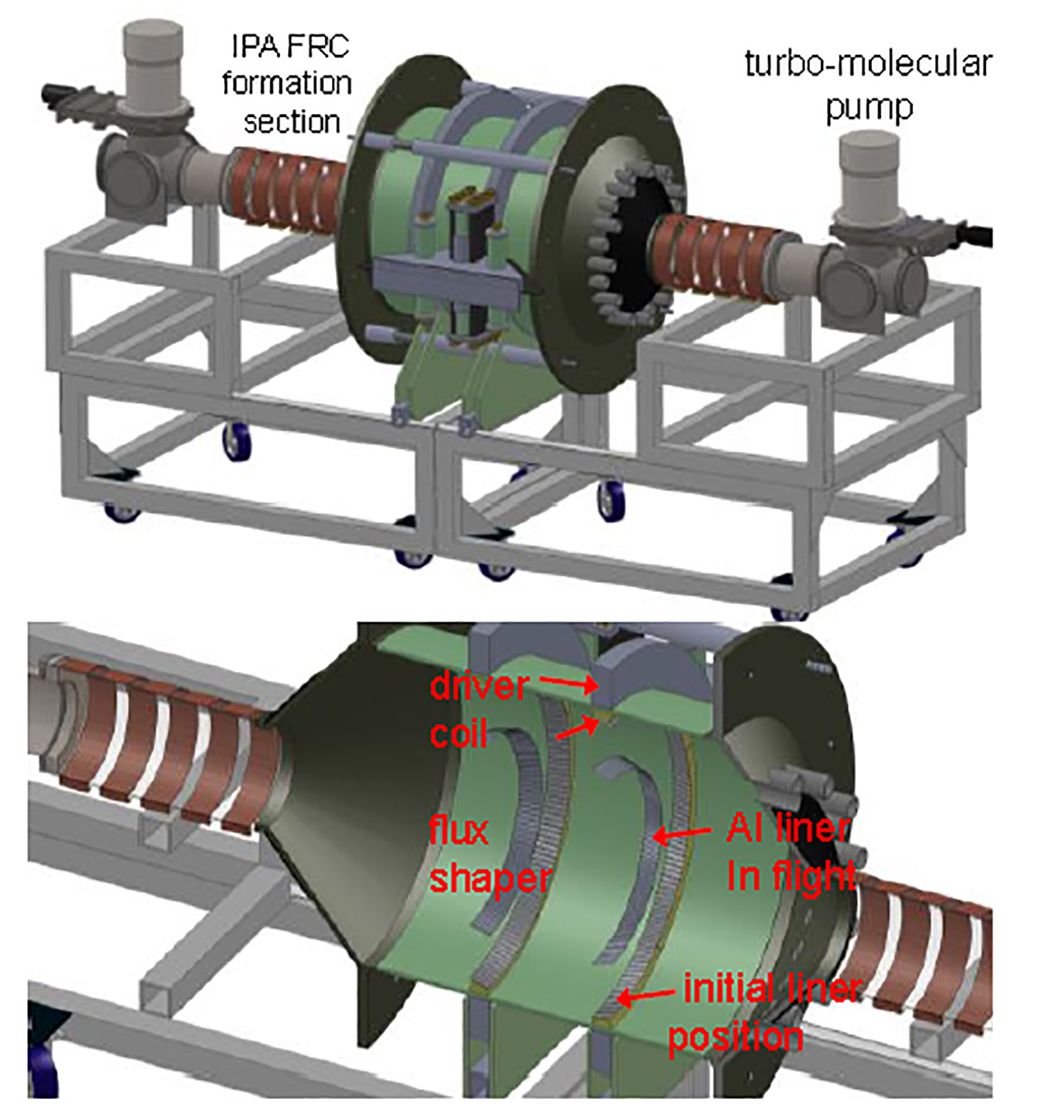
The future of manned space exploration and development of space depends critically on the creation of a dramatically more proficient propulsion architecture for in-space transportation. A very persuasive reason for investigating the applicability of nuclear power in rockets is the vast energy density gain of nuclear fuel when compared to chemical combustion energy. Current nuclear fusion efforts have focused on the generation of electric grid power and are wholly inappropriate for space transportation as the application of a reactor based fusion-electric system creates a colossal mass and heat rejection problem for space application. The Fusion Driven rocket (FDR) represents a revolutionary approach to fusion propulsion where the power source releases its energy directly into the propellant, not requiring conversion to electricity. It employs a solid lithium propellant that requires no significant tankage mass. The propellant is rapidly heated and accelerated to high exhaust velocity (> 30 km/s), while having no significant physical interaction with the spacecraft thereby avoiding damage to the rocket and limiting both the thermal heat load and radiator mass. In addition, it is believed that the FDR can be realized with little extrapolation from currently existing technology, at high specific power (~ 1 kW/kg), at a reasonable mass scale (<100 mt), and therefore cost. If realized, it would not only enable manned interplanetary space travel, it would allow it to become common place. The key to achieving all this stems from research at MSNW on the magnetically driven implosion of metal foils onto a magnetized plasma target to obtain fusion conditions. A logical extension of this work leads to a method that utilizes these metal shells (or liners) to not only achieve fusion conditions, but to serve as the propellant as well. Several low-mass, magnetically-driven metal liners are inductively driven to converge radially and axially and form a thick blanket surrounding the target plasmoid and compress the plasmoid to fusion conditions. Virtually all of the radiant, neutron and particle energy from the plasma is absorbed by the encapsulating, metal blanket thereby isolating the spacecraft from the fusion process and eliminating the need for large radiator mass. This energy, in addition to the intense Ohmic heating at peak magnetic field compression, is adequate to vaporize and ionize the metal blanket. The expansion of this hot, ionized metal propellant through a magnetically insulated nozzle produces high thrust at the optimal Isp. The energy from the fusion process, is thus utilized at very high efficiency. Expanding on the results from the phase I effort, phase II will focus on achieving three key criteria for the Fusion Driven Rocket to move forward for technological development:
- the physics of the FDR must be fully understood and validated,
- the design and technology development for the FDR required for its implementation in space must be fully characterized, and
- an in-depth analysis of the rocket design and spacecraft integration as well as mission architectures enabled by the FDR need to be performed. Fulfilling these three elements form the major tasks to be completed in the proposed Phase II study. A subscale, laboratory liner compression test facility will be assembled with sufficient liner kinetic energy (~ 0.5 MJ) to reach fusion breakeven conditions. Initial studies of liner convergence will be followed by validation tests of liner compression of a magnetized plasma to fusion conditions. A complete characterization of both the FDR and spacecraft will be performed and will include conceptual descriptions, drawings, costing and TRL assessment of all subsystems. The Mission Design Architecture analysis will examine a wide range of mission architectures and destination for which this fusion propulsion system would be enabling or critical. In particular a rapid, single launch manned Mars mission will be detailed.
2012 Phase I and Phase II Selections
Discover More NIAC Topics
Space Technology Mission Directorate

NASA Innovative Advanced Concepts

NIAC Funded Studies


IMAGES
VIDEO
COMMENTS
DARPA. NASA has hired Lockheed Martin to design, build, and test a nuclear-powered rocket for space travel. The technology could speed up a manned trip to Mars from the current seven-month minimum ...
Space Nuclear Propulsion. Space nuclear propulsion is a technology that draws energy from fission instead of traditional chemical reactions, thus providing virtually unlimited energy density and opening the door for crewed missions to Mars and deep space science. NASA is looking at two types of nuclear propulsion systems - thermal and electric.
NASA's current rocket systems (including the Space Launch System which last year sent the Artemis 1 rocket on a historic round-trip to the moon) are based on the century-old, traditional method ...
Faster space travel. Most rockets today are powered by chemical engines. These could get you to Mars, but it would take a long time - at least three years for a round trip - says Jeff Sheehy ...
The work on Nuclear Thermal Propulsion (NTP) is under the auspices of the Space Technology Mission Directorate's Game Changing Development Program. Today's advances in materials, testing capabilities, and reactor development are providing impetus for NASA to appraise Nuclear Thermal Propulsion (NTP) as an.
NASA's goal is to minimize the time the crew travels between Earth and Mars to as close to two years as is practical. Space nuclear propulsion systems could enable shorter total mission times and provide enhanced flexibility and efficiency for mission designers. To keep the round-trip crewed mission duration to about two years, at a minimum ...
First published on Tue 24 Jan 2023 13.05 EST. Nasa has unveiled plans to test nuclear-powered rockets that would fly astronauts to Mars in ultra-fast time. The agency has partnered with the US ...
In less than four years, NASA could be testing a nuclear rocket in space. The space agency and the Defense Advanced Research Projects Agency, or DARPA, announced on Wednesday that Lockheed Martin ...
NASA announced Wednesday that it is partnering with the US Department of Defense to launch a nuclear-powered rocket engine into space as early as 2027. The US space agency will invest about $300 ...
Humanity is poised to embark on a new age of space travel to Mars, our solar system and beyond as nuclear power and related technologies promise to make interplanetary missions faster, more efficient and economical. These were the conclusions of a panel of international experts from the public and private sectors at this week's IAEA webinar, "Atoms for Space: Nuclear Systems
Nuclear fusion has broad implications, fueling hopes of clean, limitless energy and the long-held dream of future rockets that are driven by nuclear propulsion.
NTP will enable faster space travel than ever before. Increased speed from NTP means benefits like longer launch windows, less crew exposure to cosmic radiation in space and satellites and robotic spacecraft getting to their destinations quicker or with much higher mass. The speed of NTP comes from its high-efficiency thrust—upwards of two ...
Nuclear Rockets and Travel to Mars. Determining the fuel for nuclear rockets is only the first step toward nuclear space travel. As Emrich points out, the work done at NTREES is only the beginning in a long process toward viable nuclear-powered rockets. "Once the testing is complete, you have to take the fuel and put it into a nuclear reactor.
Atoms for Propulsion: Rockets powered by nuclear fission or fusion are now vying to become the preferred (and faster) means of traveling the solar system. For all the controversy they stir up on ...
An update of 50-year-old regulations has kickstarted research into the next generation of rockets. Powered by nuclear fission, these new systems could be the key to faster, safer exploration of space.
World's Largest Nuclear Fusion Rocket Engine Begins Construction. Space 14 July 2023. By David Nield. The design of the new propulsion chamber. (Pulsar Fusion) Nuclear fusion propulsion technology has the potential to revolutionize space travel in terms of both speeds and fuel usage. The same kinds of reactions that power the Sun could halve ...
NASA wants to send astronauts to Mars, and they could do it with nuclear-powered rocket engines. Nuclear thermal propulsion (NTP) systems aren't new, but they could significantly reduce travel times and carry greater payloads than today's top chemical rockets — giving humans a great chance of exploring deep space. Here are 6 things you ...
Embed. Transcript. Nuclear power is potentially dangerous. So is sending humans to Mars. But some researchers think a nuclear-powered rocket might be the best way to travel to the red planet. MARY ...
In the realm of space exploration and satellite deployment, propulsion technology is the linchpin to achieving ever-greater milestones. Imagine a spacecraft that harnesses the power of nuclear ...
For astronauts to travel to Mars or any other place in the solar system in any practical sense propulsion systems more efficient than today's best chemical rocket engines will be required (e.g. chemical engines are energy limited). Nuclear rocket engines, on the other hand, have no such constraints.
Jan 24, 2023. RELEASE 23-012. NASA and the Defense Advanced Research Projects Agency (DARPA) announced Tuesday a collaboration to demonstrate a nuclear thermal rocket engine in space, an enabling capability for NASA crewed missions to Mars. NASA and DARPA will partner on the Demonstration Rocket for Agile Cislunar Operations, or DRACO, program.
Bimodal nuclear thermal rockets conduct nuclear fission reactions similar to those employed at nuclear power plants including submarines. The energy is used to heat the liquid hydrogen propellant. The vehicle depicted is the "Copernicus" an upper stage assembly being designed for the Space Launch System (2010).
NASA artist rendering, from 1999, of the Project Orion pulsed nuclear fission spacecraft. Project Orion was a study conducted in the 1950s and 1960s by the United States Air Force, DARPA, and NASA into the viability of a nuclear pulse spaceship that would be directly propelled by a series of atomic explosions behind the craft. Early versions of the vehicle were proposed to take off from the ...
A new experimental mission by NASA is now flying in orbit, aiming to use photons from the Sun to propel its way to higher altitudes. Update: April 24, 8:33 a.m. ET: Rocket Lab's Electron blasted ...
The Russian defence ministry says it destroyed 17 Ukrainian drones, while Ukraine claims Shahed-131/136 type drones launched by Russia caused damage to a hotel and heat-generating infrastructure.
Current nuclear fusion efforts have focused on the generation of electric grid power and are wholly inappropriate for space transportation as the application of a reactor based fusion-electric system creates a colossal mass and heat rejection problem for space application. The Fusion Driven rocket (FDR) represents a revolutionary approach to ...